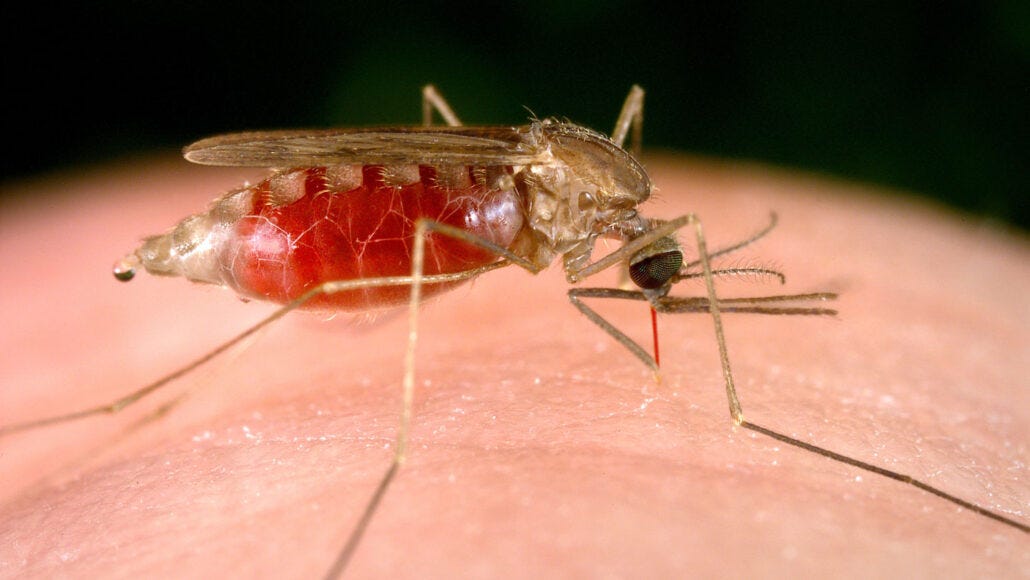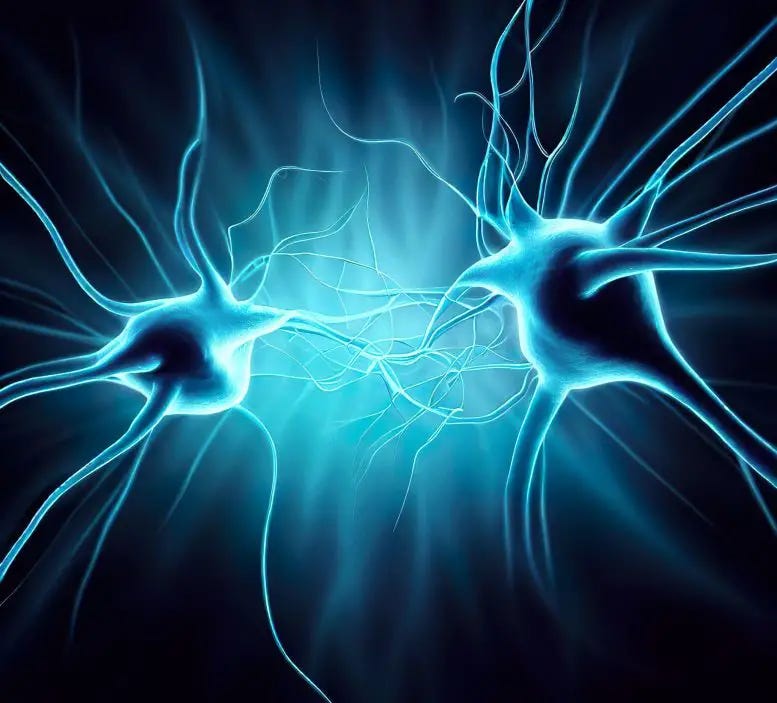Sci-Ed Update 277
Is overweight good?, dendrites & cut connections, aspartame warning, fluorescent folded DNA, axon protein, colleges are bad employers, morning coffee effects, malaria in U.S., & more!
Having an 'overweight' BMI may not lead to an earlier death

Being “overweight” may not be so bad for your health after all. The latest evidence comes from a large study where people who were classed as overweight, but not obese, had a slightly lower rate of death than people with a supposedly ideal weight – hinting that the threshold at which individuals are classed as overweight has been set too low.
It is uncontroversial that being very heavy is bad for people’s health, but it is unclear at what point health risks begin. Doctors usually advise people to lose weight if they have a high body mass index (BMI), which is someone’s weight in kilograms divided by the square of their height in metres.
In most countries, a healthy weight is defined as a BMI between 18.5 and 24.9. Having a BMI between 25 and 29.9 is classed as overweight and 30 and above is obese. These thresholds became the medical orthodoxy after being cited in a report from the World Health Organization in 1997.
Previous research made waves when it found that people who are somewhat over the “healthy” threshold of 25 may actually have a slightly lower rate of death than those who are slimmer. But many of these studies are fairly old, done when US people were generally slimmer and their participants weren’t ethnically diverse, says Aayush Visaria at Rutgers Institute for Health in New Brunswick, New Jersey.
To address those issues, his team analysed data from a more recent study, which began in 1999, and tracked the survival of about 500,000 ethnically diverse US adults of known height and weight, for up to 20 years.
Having a BMI between 25 and 27.4 carried a 5 per cent lower risk of death in this time period than a BMI within the healthy weight category of 22.5 to 24.9. A slightly higher BMI, of 27.5 to 29.9, seemed even better, linked with a 7 per cent lower risk of death.
Visaria says it would be premature to conclude that having a BMI currently classed as overweight is better than being in the healthy weight category, because population studies such as this one can have biases that distort the results.
Read more→ AandP.info/q0b
Battle of the Dendrites: How Neurons Compete To Cut Connections
Scientists from Kyushu University have uncovered the mechanisms underlying a crucial but often overlooked stage in brain development known as synaptic pruning.
The research team used mouse mitral cells, a kind of neuron in the olfactory system, for their study. They discovered that when neurons accept a neurotransmitter signal, the recipient dendrite is shielded via a sequence of chemical pathways. Simultaneously, the depolarization triggers other dendrites from the identical cell to follow a separate pathway that promotes pruning. The findings were recently published in the journal Developmental Cell.
How neurons connect and remodel themselves is a fundamental question in neurobiology. The key concept behind proper networking is in neurons forming and strengthening connection with other neurons while pruning excessive and incorrect ones.
Read more→ AandP.info/l7s
The WHO Is About to Declare Aspartame a Possible Carcinogen
It's worth noting that the classification of "possibly carcinogenic" only denotes that there is some evidence that a substance can cause cancer, and that the findings are overall considered inconclusive. There are still two categories above this: "probably carcinogenic," indicating strong evidence, and simply "carcinogenic," meaning there is consensus on a proven link.
Those are important distinctions. But no matter the technicalities involved, putting a "possibly" next to cancer is always ominous.
For its part, the FDA has repeatedly reviewed aspartame's safety since it was first approved in the 1970s. In 2021, the agency deemed that "no valid conclusion" could be derived from a major Ramazzini Institute study that supposedly found a link between aspartame and cancer in rodents.
That study, along with a large observational study in France involving 100,000 people that also linked aspartame to cancer, have both been criticized for their methodologies. By and large they're both outliers among an extensive body of research, but in the IARC's view, it's enough to warrant concern.
All in all, it's a bold decision from the WHO group — but according to Reuters, the intent is to encourage more research into aspartame, not to stoke panic.
Read more→ AandP.info/ize
Beyond the Helix: DNA’s Complex Folding Unveils New Functions

This research, which was recently published in the journal Nature, made use of high-definition imaging technologies to uncover the unique and multifaceted configuration of a synthesized DNA molecule. This molecule was designed to simulate the behavior of a protein known as green fluorescent protein (GFP). Originally extracted from jellyfish, GFP has become a critical tool in labs, serving as a luminescent marker or beacon within cells.
The findings advance the science of how DNA can be made to fold into complex shapes, and will help researchers build such DNA molecules for a variety of laboratory and clinical applications. An all-DNA fluorescent tag that mimics GFP, for example, would often be ideal for labeling targeted pieces of DNA in biological studies and in diagnostic test kits, and would be relatively inexpensive to make.
Dr. Jaffrey and colleagues reported discovering one such molecule: a single-stranded DNA that folds in a way that allows it to mimic the activity of GFP. The DNA molecule, which Dr. Jaffrey dubbed “lettuce” for the color of its fluorescent emissions, works by binding to another small organic molecule, a potentially fluorescent “fluorophore” similar to the one at the heart of GFP, and squeezing it in a way that activates its ability to fluoresce. The researchers demonstrated the lettuce-fluorophore combination as a fluorescent tag for the rapid detection of SARS-CoV-2, the cause of COVID-19.
Dr. Jaffrey and his team discovered lettuce by making many single-stranded DNAs and screening for those with the desired fluorophore-activating ability. But they didn’t know what structure lettuce used to acquire this ability. They found that it folds into a shape that has at its center a four-way junction of DNA, of a type never seen before, enclosing the fluorophore in a way that activates it.
They also observed that lettuce’s foldings are held together with bonds between nucleobases—the building blocks of DNA that are often referred to as the “letters” in the four-letter DNA alphabet.
The researchers said that the findings should speed the development of fluorescent DNA molecules such as lettuce for rapid-diagnostic tests as well as a host of other scientific applications in which a DNA-based fluorescent tag is desirable.
Read more→ AandP.info/eco
Protein That Stops Axons Falling Apart Identified

MIT scientists find evidence that a protein common to flies and people is essential for supporting the structure of axons that neurons project to make circuit connections. When those break down, the connections follow suit.
Perhaps the most obvious feature of a neuron is the long branch called an axon that ventures far from the cell body to connect with other neurons or muscles. If that long, thin projection ever seems like it could be vulnerable, a new MIT study shows that its structural integrity may indeed require the support of a surrounding protein called Perlecan. Without that protein in Drosophila fruit flies, researchers at The Picower Institute for Learning and Memory found axonal segments can break apart during development and the connections, or synapses, that they form end up dying away.
Perlecan helps make the extracellular matrix, the proteins and other molecules that surround cells, stable and flexible so that cells can develop and function in an environment that is supportive without being rigid.
Read more→ AandP.info/kuw
Are Colleges Bad Employers?
Even before the pandemic hit, many public-college employees were struggling. Their workloads had ballooned due to budget cuts and hiring freezes. With many of their colleagues heading toward the exit, those left behind were forced to pick up the slack. In the years since, things have only gotten worse: More work is spread across fewer faculty members and administrative support staff.
Read more→ AandP.info/g8l
Brain scans of coffee drinkers suggest there's more to feeling alert than just the caffeine
The researchers recruited 83 people who drank at least one cup of coffee a day to undergo MRI scans so they could observe the participants' brain activity.
Of that total, 47 people were scanned before drinking their morning cup of coffee, then again 30 minutes after they had a cup. The 36 others were simply given caffeine diluted in hot water — no coffee — and underwent the same types of MRI scans before and after they consumed the beverage.
The results, published last week in the journal Frontiers in Behavioral Neuroscience, suggest that, indeed, certain changes in brain activity were attributable only to coffee, while others were attributable to caffeine, as well.
The scans revealed that both groups — those who consumed caffeine and those who drank coffee — had decreased activity afterward in a part of the brain that puts people in a resting state. That indicated that people were more ready to start their days and engage with others after consuming either beverage. Decades of research has already shown that caffeine, a psychostimulant, can help people feel more aroused and alert.
However, the MRI scans showed that drinking coffee increased activity in parts of the brain involved in short-term memory, attention and focus, whereas ingesting caffeine on its own did not.
The researchers theorized that the sight, smell or taste of coffee may help people feel alert, regardless of the caffeine content.
Read more→ AandP.info/zw4
Four things to know about malaria cases in the United States

On June 26, the U.S. Centers for Disease Control and Prevention issued a health advisory, announcing that over the last two months four people in Sarasota County, Fla, and one person in Cameron County, Texas, had developed the mosquito-borne illness. The new cases mark the first time since 2003 that U.S. residents have contracted malaria after being bitten by a mosquito close to home. All five people received treatment and are improving.
Malaria, which is caused by Plasmodium parasites and spread to humans by Anopheles mosquitoes, is not unheard of in the United States. The disease was once prevalent before widespread spraying of the insecticide DDT helped to purge the country of any parasite-infected mosquitoes. By 1951, malaria had been eliminated within U.S. borders.
For now, it’s unlikely malaria is going to spread all over the United States, Daily says. Even if more than five people develop malaria, she expects the current outbreak will end. “I hate for people to feel anxious going outside or getting mosquito bites. So, we can reassure the public: There’s ways to prevent [malaria], ways to treat it. It’s curable.”
Read more→ AandP.info/tq6
Have you listened to the FRESH episode?
To listen to this episode, click on the player (if present) or this link→ theAPprofessor.org/podcast-episode-139.html






